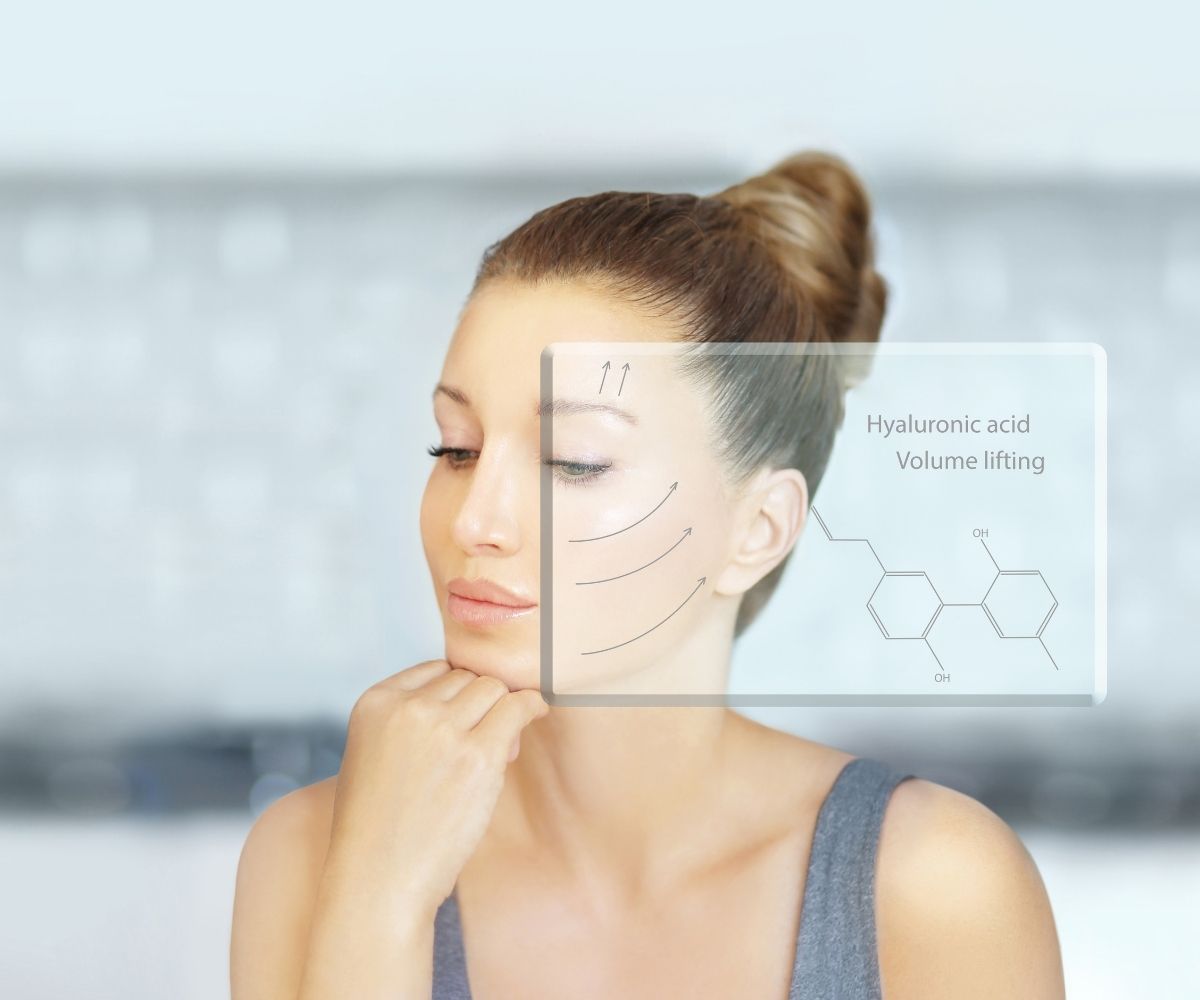Navigating the world of beauty can be daunting for many women. With so much to choose from it can seem impossible to know which option is best for you.
You’ve probably heard about face acids and their magical powers over blemishes, wrinkles, and uneven skin tones. But are they a good fit for your skin type and needs?
In this blog post, we’ll help you understand face acids so you can discover which type can transform your skin, so when you’re not having treatments, you still have some tricks up your sleeve to keep you looking and feeling younger.
Understanding the basics of face acids
Face acids might sound intimidating, but they’re actually some of the most effective ingredients in skincare when used correctly. The theory has been around since ancient Egypt when Cleopatra was said to use sour milk to exfoliate her skin. And, the magic ingredient was lactic acid!
Acids work by gently exfoliating the skin. They unclog pores and boost cell turnover to reveal a fresher, brighter complexion. Used correctly, they can tackle several skin issues from acne to ageing.
The key lies in knowing which acid addresses your skin concerns and how to incorporate it into your routine without overwhelming your skin. This simple guide from Opulent Aesthetics will help you get started.
Why face acids are essential in skincare
With age, our skin’s natural exfoliation process slows down, leading to a build-up of dead skin cells that can cause dullness and blemishes. Face acids slough away dead skin, enabling serums and moisturisers to penetrate deeper and work more effectively.
Face acids also promote collagen production and improve skin texture by evening out skin tone. Whether you’re dealing with acne scars or fine lines, there’s an acid to help you achieve smoother, healthier skin.
Let’s consider each one on its merits.
Salicylic acid for acne-prone skin
Salicylic acid is a go-to ingredient for those battling acne. It’s a beta-hydroxy acid (BHA) known for its ability to deeply cleanse and unclog pores. This acid is particularly beneficial for oily and acne-prone skin as it reduces excess sebum and prevents future breakouts.
Sebum is an oily substance produced by the sebaceous glands beneath the skin’s surface. It serves several important functions, including moisturizing and protecting the skin, forming a barrier against external irritants, and helping maintain a balanced pH. However, excessive sebum production can lead to several skin issues:
Oily skin – Too much sebum causes the skin to look shiny, especially on the forehead, nose, and chin (the T-zone). This can make makeup application and daily skin maintenance challenging.
Acne – Excessive sebum often mixes with dead skin cells, clogging pores and creating an environment where bacteria can thrive, leading to blackheads, whiteheads, and cystic acne.
Enlarged pores – High sebum levels can enlarge pores, making them more visible, especially on the nose and cheeks.
Seborrheic dermatitis – Involves irritated, oily skin that often results in red, scaly patches and dandruff, especially in areas with many sebaceous glands.
You’ll often find salicylic acid in cleansers, exfoliants, and spot treatments, typically in concentrations between 0.5% and 2%. It’s a powerful ally against blackheads, whiteheads, and pimples, making it a staple in many skincare routines.
Glycolic acid for anti-ageing
Glycolic acid is the most popular alpha-hydroxy acid (AHA) and is celebrated for its anti-ageing properties. Derived from sugar cane, it has the smallest molecular size of all AHAs, allowing it to penetrate the skin easily. Glycolic acid effectively reduces the appearance of fine lines, improving skin texture, and fading dark spots.
It’s commonly found in products at concentrations below 10% and is often used in peels for more intense treatments. Remember, glycolic acid can increase sun sensitivity, so it’s crucial to wear sunscreen daily when using this acid and avoid using it just before or while on holiday.
Mandelic acid for sensitive skin
If you have sensitive skin, mandelic acid might be your best friend. It’s an AHA derived from bitter almonds and irritates the skin less than glycolic acid. Due to its larger molecular size, mandelic acid penetrates the skin more slowly, making it suitable for sensitive or ethnic skin prone to pigmentation issues.
Mandelic acid is effective at exfoliating skin, treating sun damage, and balancing uneven pigmentation. It’s a gentle alternative that still delivers impressive results.
Azelaic acid for rosacea and hyperpigmentation
Azelaic acid is a versatile ingredient known for fighting acne and reducing inflammation. It’s frequently prescribed for rosacea and is found in many prescription creams. In addition to keeping pores clear and reducing redness, azelaic acid acts as a skin-lightening agent, making it ideal for fading post-acne marks and hyperpigmentation.
Typically found in concentrations of 15% to 20% in creams, azelaic acid is suitable for use all over the face, day and night, without causing significant irritation.
Kojic acid for brightening
Kojic acid is a popular ingredient in Asian skincare, praised for its whitening and anti-ageing properties. It targets hyperpigmentation and uneven skin tone, making it an excellent choice for brightening complexion.
Kojic acid is commonly found in cleansers and serums at concentrations of 1% to 4%. As it can be irritating, it should be used cautiously. Always patch-test new products and consider pairing them with hydrating ingredients for best results.
Vitamin C (ascorbic acid) for radiance
Vitamin C, or ascorbic acid, is a potent antioxidant that brings a radiant glow to the skin. It treats melasma and boosts collagen production, giving your skin a youthful appearance. Vitamin C is often unstable when exposed to air and water, so look for stable forms like magnesium ascorbyl phosphate.
Incorporating vitamin C into your routine can enhance your skin’s radiance and protect against environmental damage. Apply it in the morning under sunscreen to maximise protection.
Combining acids for maximum benefits
Each acid offers unique benefits for certain conditions. You can use multiple acids to address different skin concerns, but it’s crucial to introduce them gradually to avoid irritation. Start using one acid at a time and alternate between your morning and evening routines.
For example, try using salicylic acid in the morning and glycolic acid at night. This way, you reap the benefits of both without overwhelming your skin.
Safety tips for using face acids
Face acids are powerful, and using them correctly is essential. Always patch-test new products and start with lower concentrations, especially if you have sensitive skin. If you change brands, start the process again, especially if the brand is lesser known. This is because weak quality control practices can mean having higher concentrations than those stated on the labels.
If possible, patch-test from sample bottles before you purchase them. Always introduce one product at a time and monitor how your skin reacts.
Remember to apply sunscreen daily, as many acids can increase sun sensitivity. Also, never mix acids with retinoids or other potent actives without consulting a dermatologist.
Lesser-known acids worth exploring
There are lesser-known acids that are worth considering for your beauty routine. Linoleic and oleic acids are often found in oils and offer hydration and barrier support. Linoleic acid suits oily skin, while oleic acid is better for dry skin.
Lactic acid, another AHA, is excellent for gentle exfoliation and improving skin texture. Ferulic acid is an antioxidant that enhances the stability and efficacy of other antioxidants like vitamin C.
Finding the right acid for you
Choosing the right face acid depends on your skin type and concerns. Consult a dermatologist if you’re unsure or have specific skin conditions. They can recommend the best acids and concentrations tailored to your needs. Remember, it is best to start with lower concentrations and work your way up to harsher treatments.
Experiment with different products and pay attention to how your skin responds. With time and patience, you’ll find the perfect combination of acids to achieve your desired results. Taking pictures of before and after is a helpful way to monitor changes in skin quality after applying different treatments.
Final thoughts
Face acids are invaluable tools in the quest for flawless skin. Whether you’re battling acne, seeking anti-ageing solutions, or simply aiming for a radiant complexion, there’s an option for you.
Understanding your skin’s unique needs and incorporating the right products into your routine is key to unlocking your skin’s full potential. Home treatments are just one way to stay on top of your beauty and anti-ageing goals.
Opulent Aesthetics in Caterham and Purley provides specialised treatments that work more immediately and effectively, and make your home beauty routine all the more effective.
If you would like to explore your options, check our list of treatments, which include skin boosters, dermal fillers, microneedling, and chemical peels. Our lead clinician, Sadie, will happily guide you through the process.
But, remember, you are already beautiful just the way you are.

